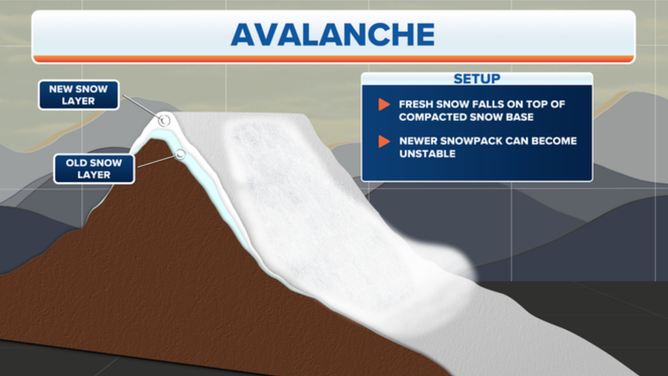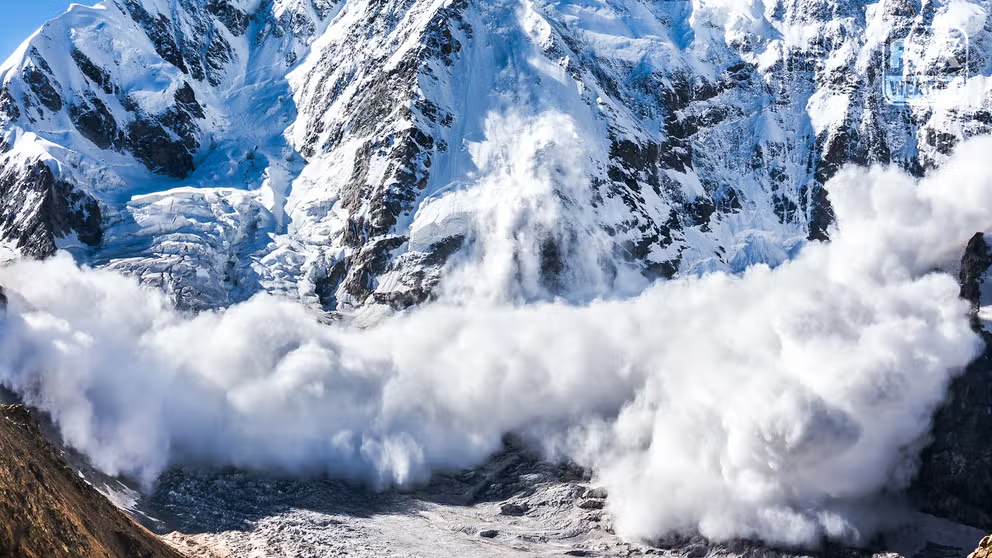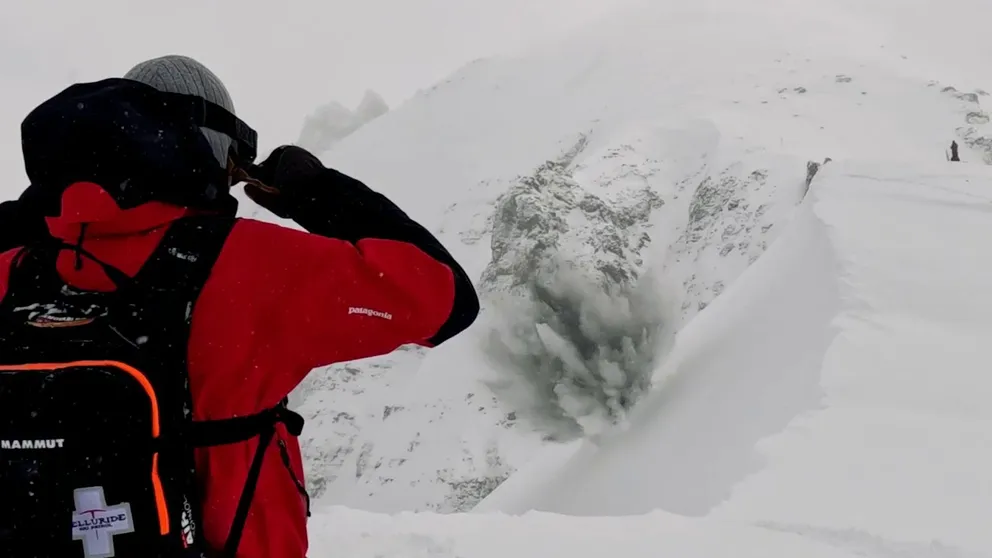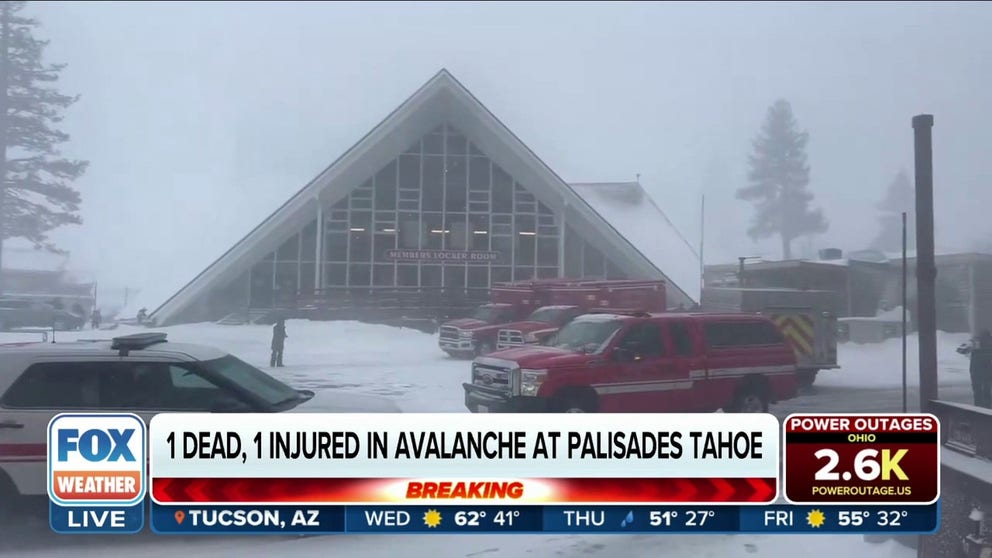How to stay safe from avalanches as risk remains high in western US
At least two people have been killed by avalanches so far in 2024. One man was killed in Idaho and another was killed in California.
Avalanches explained: what to know and how to stay safe
An avalanche is a rapid flow of snow down a mountain, hill or any steep incline.
Winter storms have dumped feet of new snow across the highest mountain peaks in the western U.S. recently, leading skiers to brave the elements and head outdoors for a day on the slopes.
However, the blasts of winter weather have also led to unstable snowpacks, resulting in a high danger of avalanches in many parts of the West.
Deadly avalanches have already been reported just two weeks into the start of 2024.
TENSE VIDEO SHOWS MASSIVE AVALANCHE SLIDING DOWN UTAH MOUNTAIN, ENVELOPING SKIERS IN SNOW CLOUD
Watch: Ski patrol blow up the side of a mountain to prevent avalanches
In southwestern Colorado, explosives were launched into the snowy mountain as part of avalanche mitigation. (Courtesy: Telluride Ski Resort) (Video from February 2023)
One man was killed, and two others were rescued after an avalanche last week near Stevens Peak in northern Idaho.
Located in Shoshone County, Stevens Peak recently received heavy snow and experienced powerful winds, which created conditions ripe for avalanches.
Avalanche kills at least 1 person at California ski resort
FOX Weather Meteorologist Steve Bender talks about a deadly avalanche that happened at a California ski resort on Wednesday.
Another skier was killed at Palisades Tahoe ski resort in Olympic Valley in California last Wednesday after an avalanche occurred just after the resort opened for the day.
Palisades Tahoe officials said an avalanche happened at about 9:30 a.m. Wednesday above the GS gully area of KT-22. It was the first day the area for experienced skiers was open for the season.
The Placer County Sheriff's Office said two people were buried during the avalanche; one person was killed, and another person was injured. Two other people were caught in the slide but did not suffer injuries.
WATCH: COLORADO SKI PATROL BLOWS UP SIDE OF MOUNTAIN TO PREVENT AVALANCHES
Avalanche danger remains high across western US

(FOX Weather)
Because of the snow and other winter conditions, the avalanche danger remains high across the western U.S.
According to avalanche.org, there is a moderate avalanche danger across the Cascades in the Pacific Northwest. Conditions vary between moderate and considerable across the Sierra Nevada Mountains in California.
There is a high avalanche danger, however, across portions of Wyoming, Utah and Colorado.
HERE'S HOW TO SURVIVE IF YOU GET LOST IN THE WOODS THIS WINTER

(FOX Weather)
Because of the risk, Avalanche Warnings have been issued across the Rocky Mountains. This includes ski resorts in areas including Salt Lake City, Manti, Richfield and Cedar City in Utah, as well as Steamboat Springs, Vail, Grand Junction and Telluride in Colorado.
Avalanche Watches have been posted for areas near Pagosa Springs in Colorado.
What is an avalanche?

An image showing how avalanches form.
(FOX Weather)
An avalanche is a rapid flow of snow down a mountain, hill or any steep incline and can be triggered from below or from a distance.
Avalanches can happen any time there is snow, but the risk is increased at certain times of the year.
They often occur when fresh new snow falls on top of an already-compacted snow base. That newer snow becomes unstable, triggering an avalanche.
Heavy snow and strong winds can also result in natural avalanches, but the National Weather Service says that manmade avalanches are much more common.
"In 90 percent of avalanche incidents, the snow slides are triggered by the victim or someone in the victim's party," the NWS says. "Avalanches kill more than 150 people worldwide each year."
How to survive an avalanche
Avalanche Safety 101
With more people skiing in the back country, the need for Avalanche safety classes has increased dramatically. The Utah Avalanche center provides instruction and information for those seeking such thrills. (Video from November 2021)
While avalanches are sudden, there are warning signs to help you stay safe. Here are tips from the NWS on how to stay safe while you are on the slopes.
- Know the three factors required for an avalanche: Slope: Avalanches generally occur on slopes steeper than 30 degrees. Snowpack: Recent avalanches, shooting cracks and "whumping" are signs of unstable snow. Trigger: Sometimes, it doesn't take much to tip the balance; people, new snow and wind are common triggers.
- Slope: Avalanches generally occur on slopes steeper than 30 degrees.
- Snowpack: Recent avalanches, shooting cracks and "whumping" are signs of unstable snow.
- Trigger: Sometimes, it doesn't take much to tip the balance; people, new snow and wind are common triggers.
- Determine if you are on or below slopes that can avalanche.
- Find out if the snow is stable.
- Get the Advisory: Refer to your local avalanche center for current snowpack conditions.
- Get the gear and learn how to use it. Have these three avalanche safety essentials in your pack: Transceiver: so you can be found if covered by the snow. Shovel: so you can dig out your partner. Probe: so you can locate someone who the snow has covered.
- Transceiver: so you can be found if covered by the snow.
- Shovel: so you can dig out your partner.
- Probe: so you can locate someone who the snow has covered.
- Avalanche survival rates plummet after about 15 minutes for victims who do not die from trauma.
- Saving your partner is up to you. Practicing realistic scenarios beforehand is essential.



